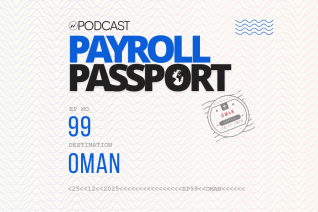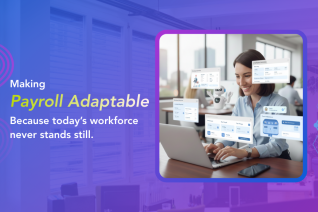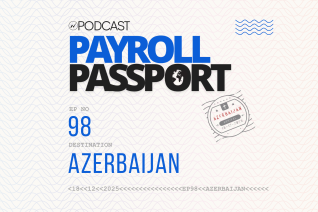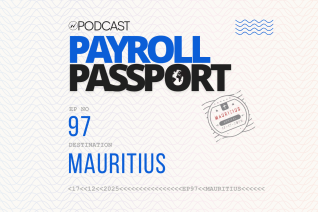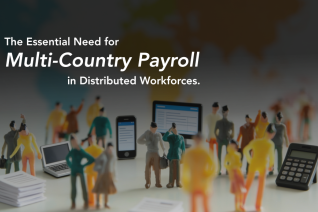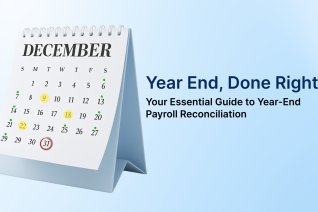Mastering Data Synchronization: Key to Streamlined Payroll Operations

Ensuring accurate and timely payroll processing is crucial in today's fast-paced business environment. Effective data synchronization is the backbone of streamlined payroll operations, helping organizations seamlessly manage employee information, salaries, benefits, and tax deductions.
This article will explore the significance of data synchronization in payroll, its challenges, and potential solutions to efficient payroll management.
The Significance of Data Synchronization in Payroll
Ensuring Accuracy and Consistency
Data synchronization involves updating and maintaining consistent data across multiple systems and platforms. In payroll operations, this means ensuring that employee information, time and attendance records, salary details, and benefits data are accurately reflected in all relevant systems.
Accurate data synchronization prevents discrepancies and errors that can lead to payroll inaccuracies, legal issues, and employee dissatisfaction.
Improving Efficiency
Research indicates that manual data entry and reconciliation processes are time-consuming and prone to errors. The study compared three data entry methods: double entry, visual checking, and single entry. Visual checking resulted in 2958% more errors than double entry and was not significantly better than single entry.
Automated data synchronization reduces the need for manual intervention, speeding up payroll processing and allowing HR and payroll teams to focus on more strategic tasks. This efficiency not only saves time but also reduces operational costs.
Enhancing Compliance
Payroll compliance involves adhering to various federal, state, and local regulations. Data synchronization ensures that payroll data is consistently updated and accurately reported, helping organizations avoid penalties and legal issues. It also facilitates easy access to accurate records for audits and compliance checks.
Read more: Unleash the Power of Data in Global Payroll
Challenges in Data Synchronization
Data Silos
One of the primary challenges in data synchronization is the existence of data silos. Different departments often use separate systems to manage their data, leading to inconsistencies and difficulties in consolidating information.
Breaking down these silos and integrating data from multiple sources is essential for accurate payroll processing.
Integration Issues
Integrating disparate systems can be complex, especially when dealing with legacy systems that may not support modern integration protocols.
Ensuring seamless data flow between systems requires robust integration solutions that can handle various data formats and protocols.
Data Security
Reports of employee data breaches soared to 41% in 2023, which, according to the ICO, is a five-year high. Data security is a significant concern in payroll operations, as sensitive employee information must be protected. Ensuring secure data synchronization involves implementing encryption, access controls, and regular security audits to safeguard data integrity and confidentiality.
Real-Time Updates
In a dynamic work environment, employee information can change frequently. Real-time updates are essential to ensure that payroll data remains accurate and up-to-date. Delays in synchronization can lead to discrepancies and errors in payroll processing.
Solutions for Effective Data Synchronization
Implementing Integration Platforms
Integration platforms are essential for connecting disparate systems and ensuring seamless data flow. These platforms provide middleware facilitating data exchange between different applications, enabling real-time updates and consistent data across systems. By using modern integration platforms, organizations can overcome the challenges posed by legacy systems and data silos.
Using Cloud-Based Solutions
Cloud-based payroll solutions offer flexibility and scalability, making it easier to manage data synchronization. These solutions often have built-in integration capabilities, allowing seamless data exchange between HR, time tracking, and payroll systems.
Additionally, cloud-based solutions provide enhanced security measures, such as encryption and regular updates, to protect sensitive payroll data.
Automating Data Synchronization
Automation is critical to efficient data synchronization. Automated workflows can handle repetitive tasks, such as data entry and updates, reducing the risk of errors and ensuring timely updates. Organizations can streamline payroll processes and improve overall efficiency by leveraging automation tools.
Ensuring Data Security
To address data security concerns, organizations must implement robust security measures. Encryption, access controls, and regular security audits are essential to protecting sensitive employee information.
Given the sensitive nature of payroll data, securing it during synchronization is crucial. One effective method is using a Virtual Private Network (VPN), which provides a secure, encrypted connection over the internet, protecting data from unauthorized access.
This is especially important for organizations with remote or distributed teams, where payroll data is accessed from various locations. A VPN for travel ensures that payroll information remains secure, even when employees use potentially unsecured networks like public Wi-Fi in hotels or airports.
Furthermore, using an antivirus for Mac devices across the board can also help enhance security by protecting systems from malware and other cyber threats.
Conducting Regular Audits
Regular audits are essential to ensuring the accuracy and integrity of payroll data. By conducting periodic audits, organizations can identify and rectify discrepancies, ensuring that data synchronization processes are functioning correctly. Audits also help maintain compliance with regulatory requirements.
Read more: Leveraging Payroll Data for Workforce Planning
Best Practices for Streamlined Payroll Operations
Centralizing Data Management
Centralizing data management involves consolidating data from various sources into a single system. This approach simplifies data synchronization and ensures all relevant information is easily accessible. By centralizing data, organizations can reduce the risk of errors and improve overall efficiency.
Standardizing Data Formats
Standardizing data formats across systems is essential for seamless data synchronization. Consistent data formats ensure that information is accurately exchanged between systems, reducing the risk of discrepancies. Organizations should establish data standards and ensure that all systems adhere to these standards.
Training Employees
Training employees on data synchronization and best practices is crucial for effective payroll management. Employees should understand the significance of accurate data entry and the impact of discrepancies on payroll processing. Regular training sessions help reinforce these concepts and ensure employees follow established protocols.
Leveraging Analytics
Analytics tools can provide valuable insights into payroll data, helping organizations identify trends, anomalies, and areas for improvement. Organizations can make data-driven decisions to optimize payroll processes and enhance overall efficiency by leveraging analytics.
Monitoring and Continuous Improvement
Continuous monitoring and improvement are vital for maintaining effective data synchronization in payroll operations. Organizations should regularly review their synchronization processes, identify areas for enhancement, and implement necessary changes. This proactive approach ensures that payroll operations remain efficient and accurate over time.
Data Synchronization: The Foundation of Efficient Payroll Management
Mastering data synchronization is key to streamlined payroll operations. By ensuring accurate and consistent data across systems, organizations can improve efficiency, enhance compliance, and reduce operational costs.
Leveraging analytics and maintaining a focus on continuous improvement will help organizations achieve accurate and timely payroll processing, contributing to overall business success. As businesses continue to evolve, effective data synchronization will remain a critical component of efficient and compliant payroll operations.
Struggling with payroll data synchronization? Neeyamo's Global Payroll Technology offers the solution. Our platform seamlessly integrates disparate systems, ensures real-time data updates, and provides robust security measures. With cloud-based flexibility and advanced analytics, we transform payroll operations for global businesses.
Don't let data synchronization challenges compromise your payroll accuracy and efficiency. Experience the Neeyamo difference today. Contact us at irene.jones@neeyamo.com to schedule a demo and see how we can transform your payroll operations.
Latest Resources
Stay informed with latest updates
If you're curious and have a thirst for knowledge pertaining to the HR, payroll, and EOR universe, don't miss out on subscribing to our resources.




